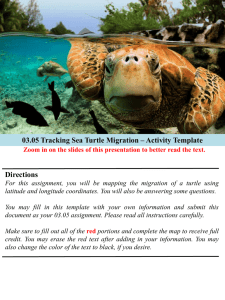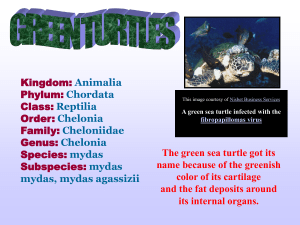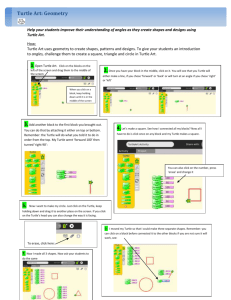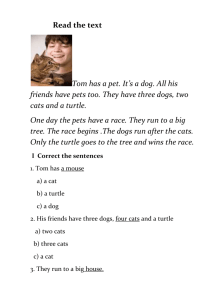docx
advertisement
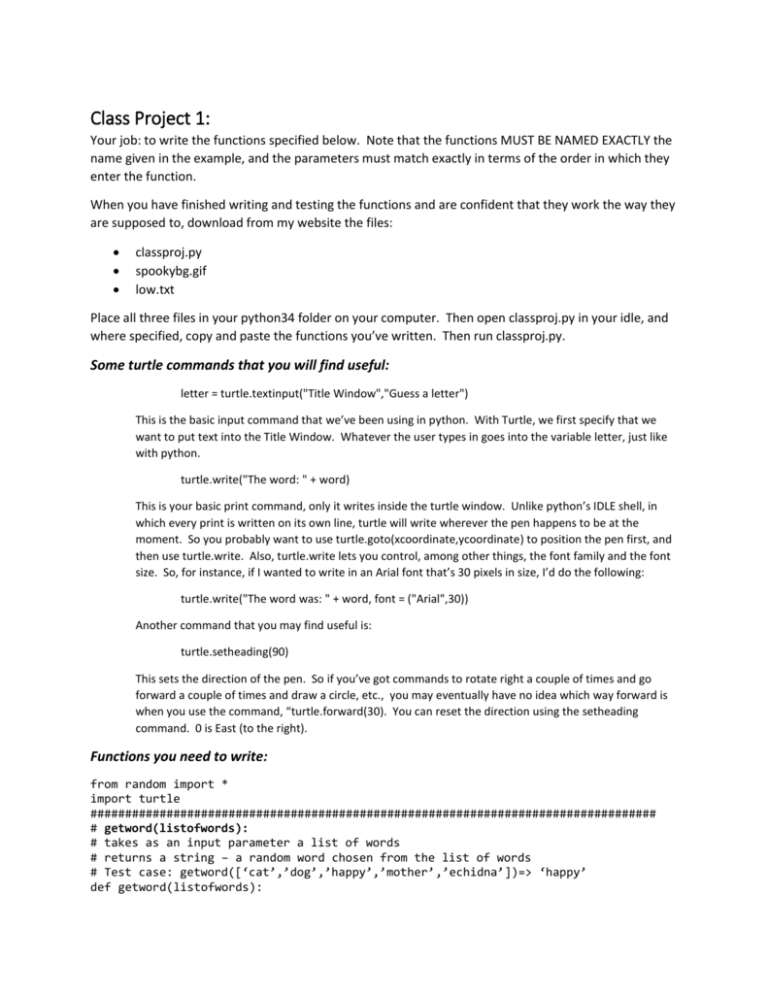
Class Project 1: Your job: to write the functions specified below. Note that the functions MUST BE NAMED EXACTLY the name given in the example, and the parameters must match exactly in terms of the order in which they enter the function. When you have finished writing and testing the functions and are confident that they work the way they are supposed to, download from my website the files: classproj.py spookybg.gif low.txt Place all three files in your python34 folder on your computer. Then open classproj.py in your idle, and where specified, copy and paste the functions you’ve written. Then run classproj.py. Some turtle commands that you will find useful: letter = turtle.textinput("Title Window","Guess a letter") This is the basic input command that we’ve been using in python. With Turtle, we first specify that we want to put text into the Title Window. Whatever the user types in goes into the variable letter, just like with python. turtle.write("The word: " + word) This is your basic print command, only it writes inside the turtle window. Unlike python’s IDLE shell, in which every print is written on its own line, turtle will write wherever the pen happens to be at the moment. So you probably want to use turtle.goto(xcoordinate,ycoordinate) to position the pen first, and then use turtle.write. Also, turtle.write lets you control, among other things, the font family and the font size. So, for instance, if I wanted to write in an Arial font that’s 30 pixels in size, I’d do the following: turtle.write("The word was: " + word, font = ("Arial",30)) Another command that you may find useful is: turtle.setheading(90) This sets the direction of the pen. So if you’ve got commands to rotate right a couple of times and go forward a couple of times and draw a circle, etc., you may eventually have no idea which way forward is when you use the command, “turtle.forward(30). You can reset the direction using the setheading command. 0 is East (to the right). Functions you need to write: from random import * import turtle ################################################################################## # getword(listofwords): # takes as an input parameter a list of words # returns a string – a random word chosen from the list of words # Test case: getword([‘cat’,’dog’,’happy’,’mother’,’echidna’])=> ‘happy’ def getword(listofwords): ################################################################################### ################################################################################### # checkwin(word,blank) # takes two input parameters: a string (a word) and a list of letters. # The function checks to see if each letter in the word is in the same place as in # the list of letters. # The function returns a Boolean value True if the word and the list of letters # contain the same letters and False if they don’t. # Test cases:checkwin(“dog”,[“d”,”o”,”g”] => True # checkwin(“dog”,[“d”,”i”,”g”] => False # checkwin(“dog”,[“d”,”o”,”g”,”g”] => False # checkwin(“mother,[“_”,”_”,”t”,”h”,”e”,”_”])=> False # checkwin(“Happy”,[“h”,”a”,”p”,”p”,”y”])=> True def checkwin(word,blank): ################################################################################### ################################################################################## # makeblank(word) # takes as input a string # returns a list, with the ‘_’ character for every character in the word. # test cases: makeblank(‘cat’) => [‘_’,’_’,’_’] # makeblank(‘happy’) => [‘_’,’_’,’_’ ,’_’,’_’] def makeblank(word): ################################################################################## ################################################################################## # drawblanks(blank,size,space) # takes as input parameters 3 parameters: a list of blanks, and two numbers: the # length of the blank to be drawn, and the length of the space drawn in between # each blank. # Returns nothing. # draws in the turtle window a blank for each blank in the list, with a space between # each blank, starting with the x coordinate being -300, and the y coordinate being # -270. # So, given the input: ['_','_','_','_'],30,10 #you should have a turtle screen looking like: def drawblanks(blank,size,space): ################################################################################### ################################################################################### # placeletter(letter,word,blank,size,space) # Takes as input parameters: # letter: a string of one character - the letter guessed # word: a string – the word being guessed # blank: a list – the list of blanks that represents the word being guessed # size: an integer – the length of the blank line being drawn in turtle # space: an integer – the length of the spaces between blank lines drawn # # This function modifies the blank list, by substituting the letter for the # ‘_’ character in the list everywhere the letter occurs in the word. # It also writes in turtle over the appropriate blank line the letter guessed at the # appropriate places. # It returns a string – the blank list with the new letters in place # Test cases: # placeletter(‘p’,’puppy’,[‘_’,’_’,’_’,’_’,’_’],30,10) => [‘p’,’_’,’p’,’p’,’_’] # and your screen would look like: # def placeletter(letter,word,blank,size,space): ###################################################################################



